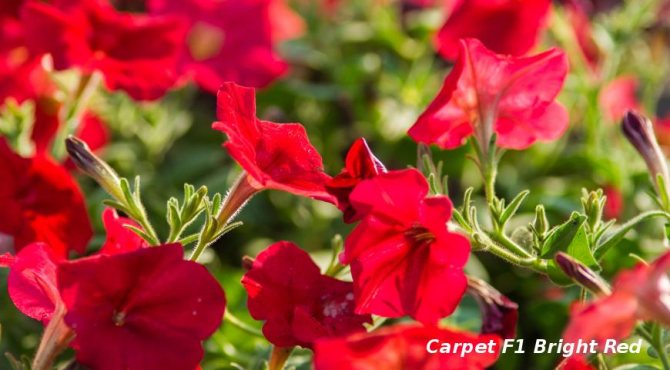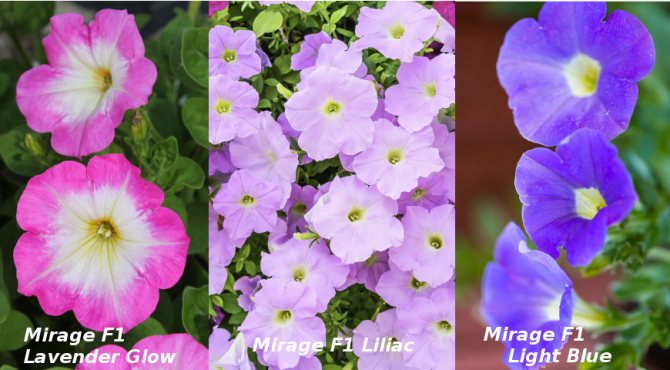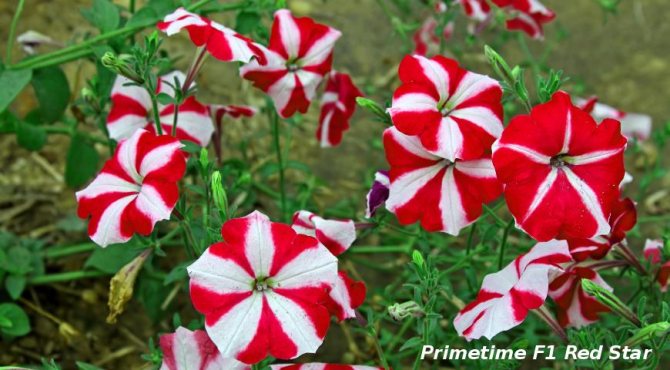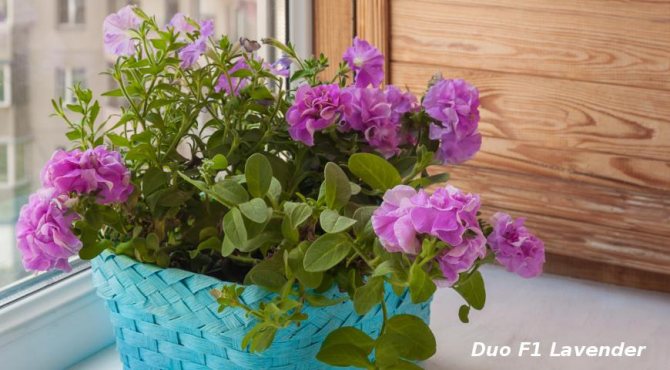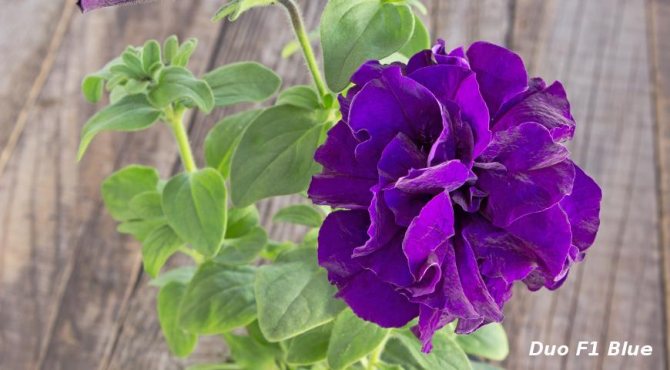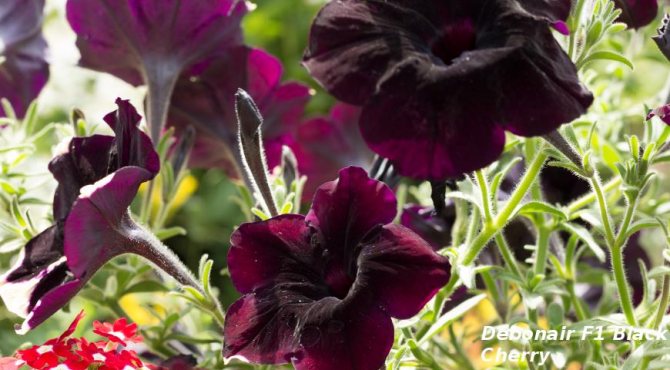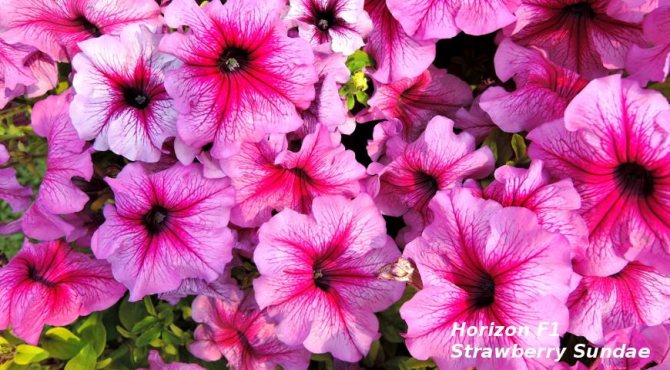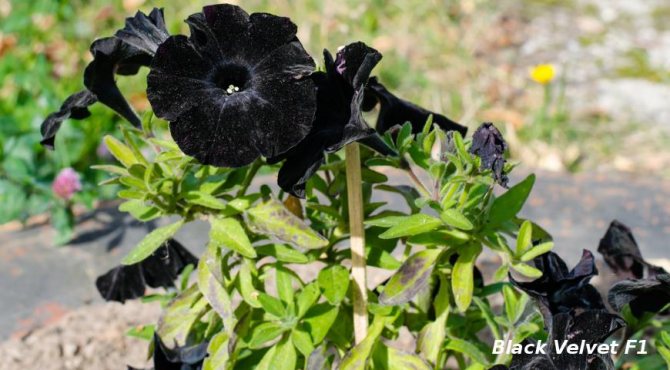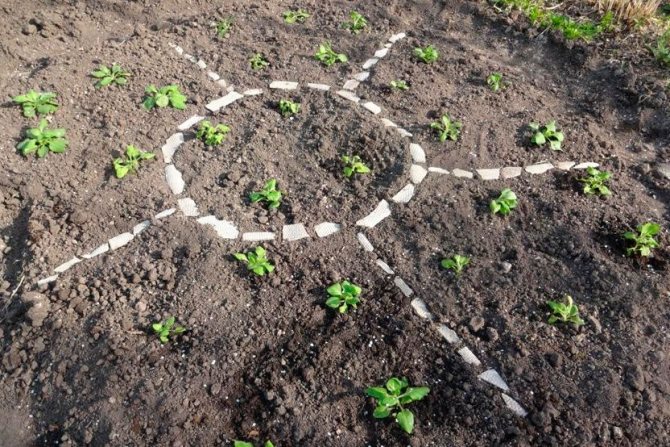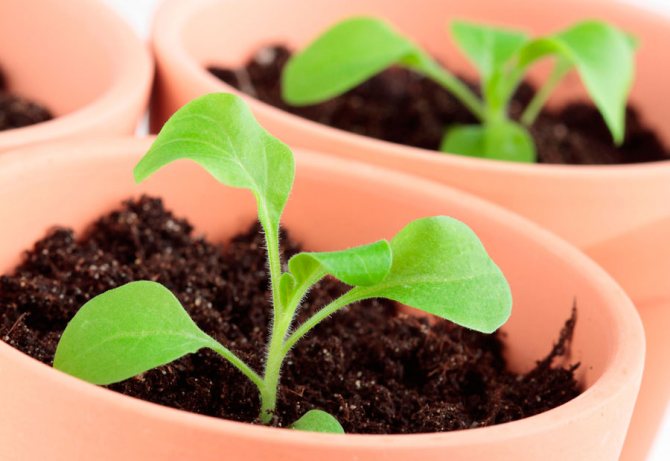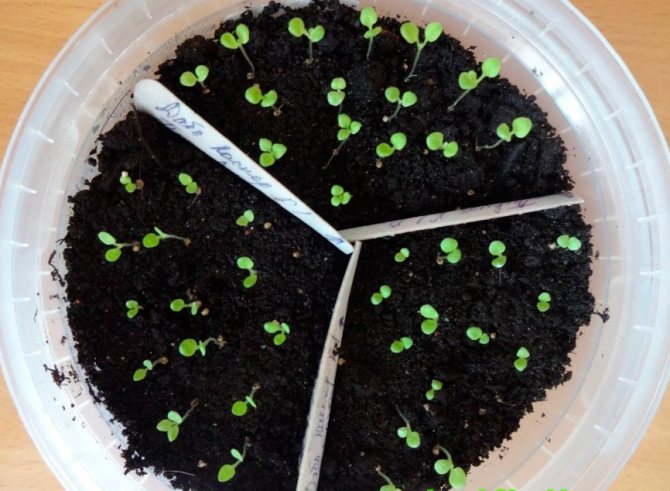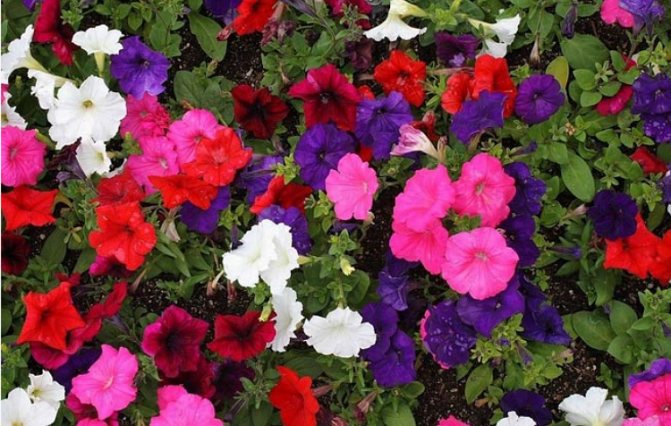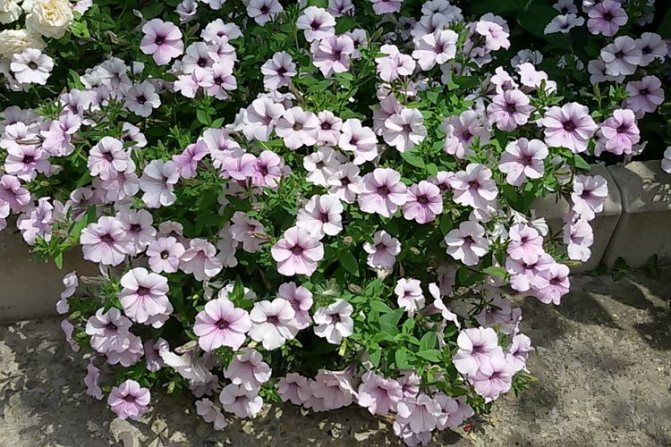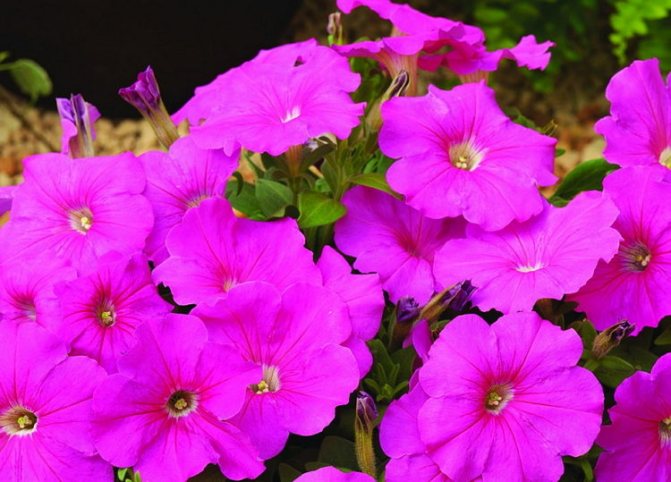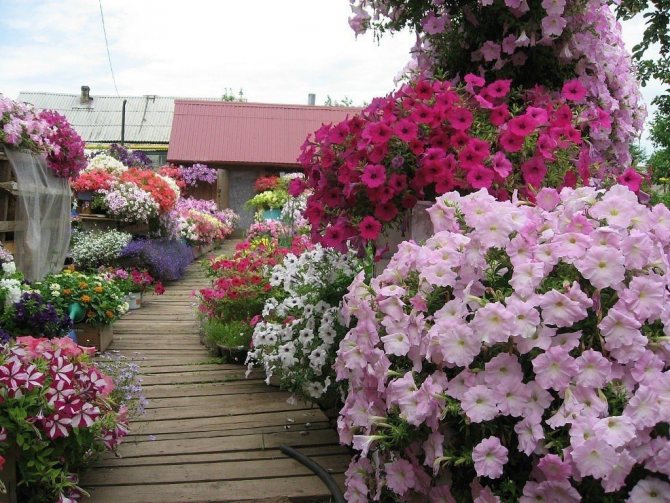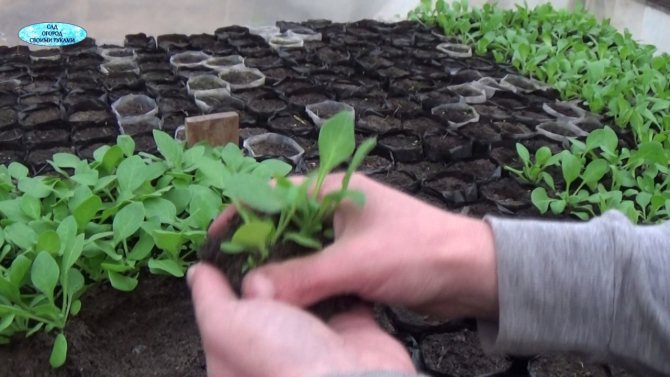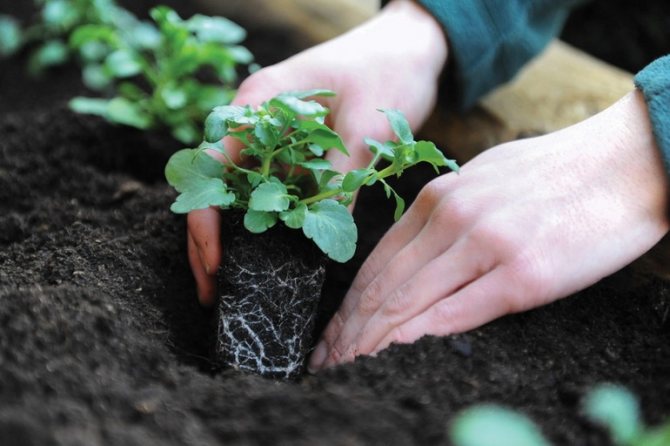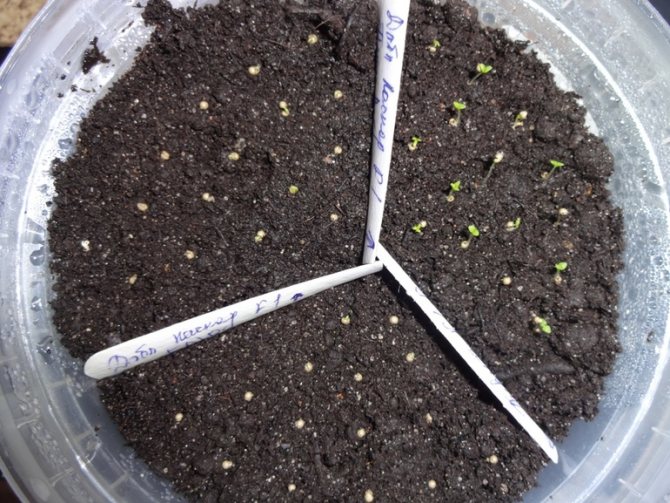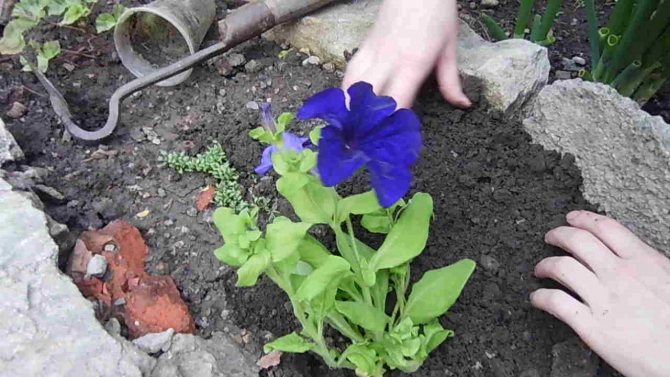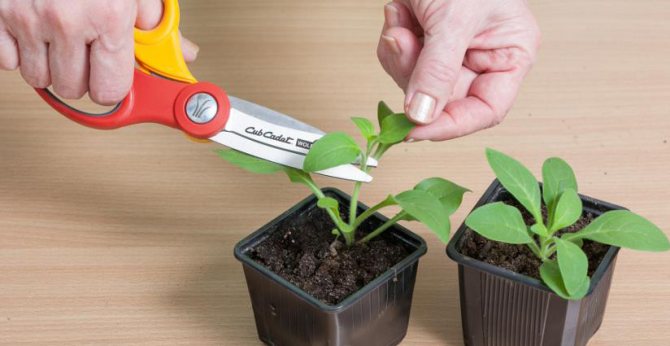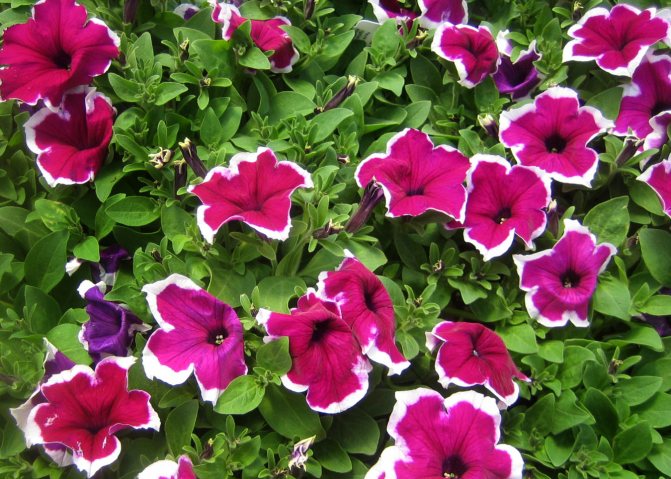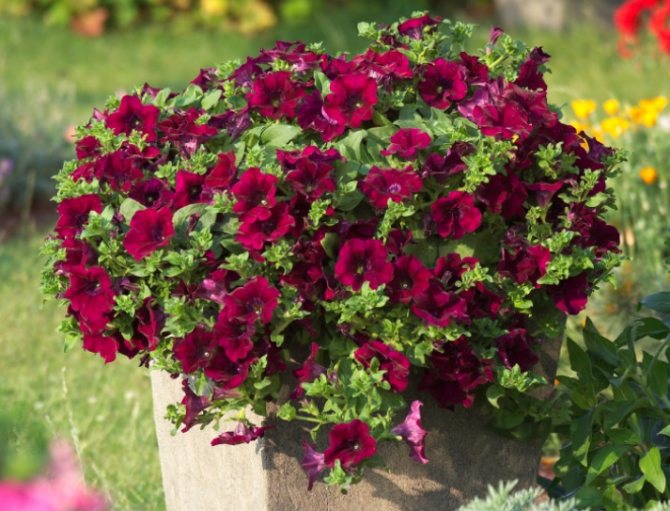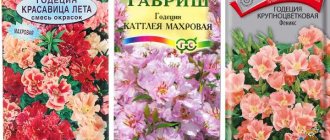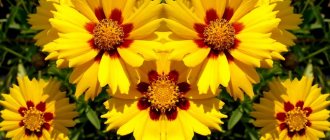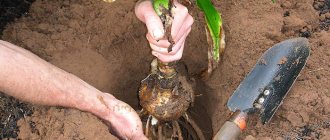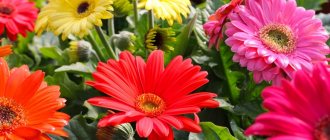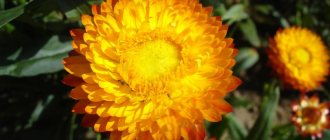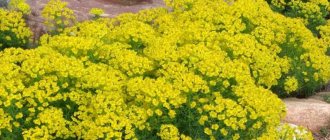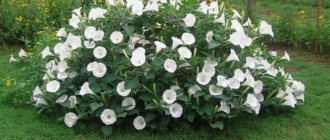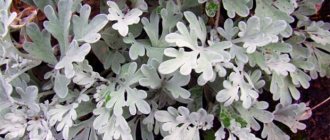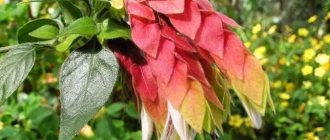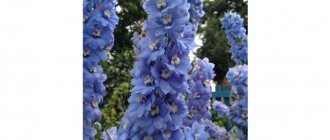Flowers have long become an integral part not only of rural and suburban areas, but also an element of the decor of the urban environment. From dacha fun, they have become a popular way to decorate balconies, loggias, medical and educational institutions, public institutions, restaurants and cafes. Increasingly, flower arrangements appear not only in parks, squares and front gardens, but also in flower pots and other hanging containers that adorn city buildings both outside and inside.
Of course, the brightest and most unusual in shape and color flowers are especially popular, with the help of which you can create bright decorative compositions. At the same time, it is not always possible to grow exotic varieties, often capricious and extremely demanding on climate conditions. In this regard, domestic gardeners often give preference to familiar and proven flower crops, choosing varieties that are unusual in color and shape in order to give individuality to their flower beds.
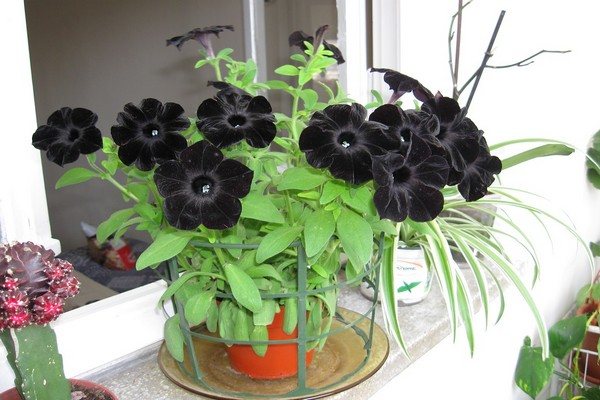
Black petunia: photo
In this sense, petunias are recognized favorites among flower lovers - few of the representatives of the flower world can boast of such a variety of bright colors. The varietal abundance of these catchy plants is combined with the versatility of their use: petunias look equally impressive in a front garden, in a city flower bed, in a hanging planter on a veranda, in pots on a balcony or windowsill. Along with the usual pink, white, blue, red varieties, there are a number of less common varieties with amazing petal colors. These include black petunia, which will be discussed in this article.
History of appearance
Speaking about the history of breeding petunia, it should be noted that petunia was bred in the 18th century, in South America. Varies with a variety of forms, color of flowers, unpretentiousness. In its natural habitat, it is a perennial, herbaceous, erect branching or creeping plant.
Modern varieties are diverse, they are annuals with a predominance of heterotic hybrids, which have pomp and resistance to weather phenomena.
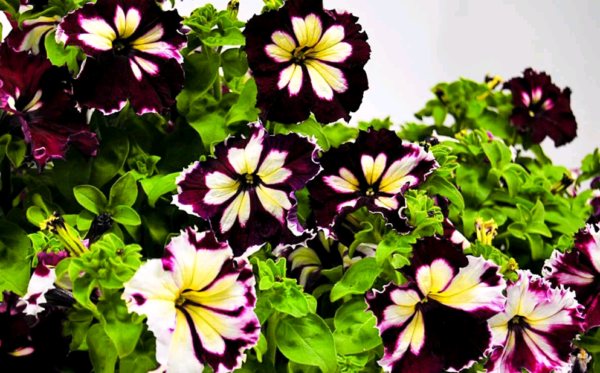

Possible problems
When growing multiflorous petunias, numerous problems are possible. Every florist should know them and how to eliminate them:
- To make it as easy as possible for young plants to transfer the transplant to open ground, carry out such events in cloudy weather or in the evening.
- For maximum moisture retention and protection from ground frost, thoroughly mulch the plant with peat.
- When planting petunias in pots or flowerpots, pay attention to the height of the sides. It should not exceed 5 cm. Otherwise, with a slight wind, the branches will rub against the edge and break.
- Additional drainage in flower pots is not worth it. The special holes on the bottom are enough. It's just that the soil of petunias dries so quickly.
- All manipulations for moistening and feeding should be carried out in the evening. The reason is that when the sun is active, burns form on the leaves.
On the pages of our site you will find a detailed description, photos and secrets of growing numerous varieties and hybrids of petunias of different colors and shades. Among them, the most famous are: Surfinia, Typhoon Silver, Wave, Starry Sky, Tidal, La Gioconda, Opera and Grandiflora.
Comparison of grandiflora and petunia multiflorous
Two popular types of petunias that are spoiled for attention by gardeners. Multiflora or multi-flowered petunias reach a height of 25 cm, abundantly covered with flowers reaching a diameter of up to 5 cm.The flower can be either simple or double. An early flowering plant with a wide range of colors. Suitable for open and closed ground.
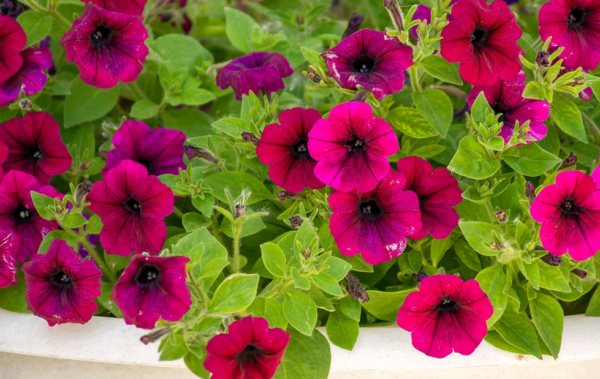

The Grandiflora group includes both low-growing (25-35 cm) and tall (50-70 cm) petunias with erect compact or branchy spreading bushes, with a small number of large, simple funnel-shaped or double flowers, the diameter of which ranges from 80 to 130 mm ... The edges of the petals can be solid or wavy and even corrugated. Large-flowered petunias are weakly resistant to weather conditions, therefore they are more often used for landscaping balconies, verandas or terraces than for planting in open ground.
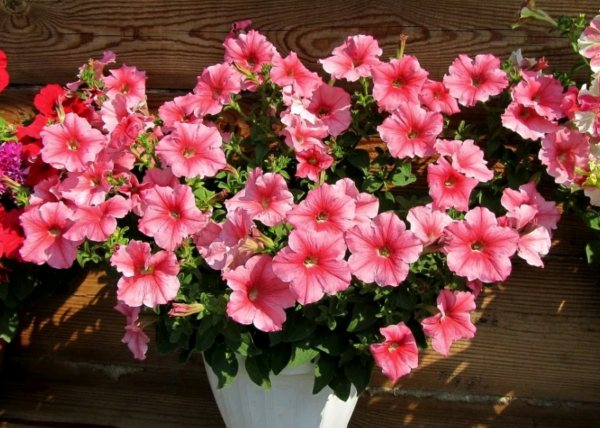

Unlike multiflora petunias, grandiflora petunia is characterized by the largest buds, as well as fast growth, long flowering time.
Types and varieties of petunias with photos and names
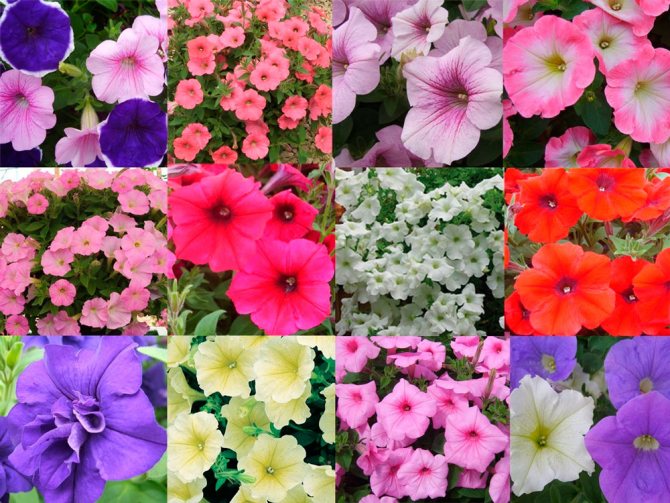

All varieties of garden petunia are divided into 2 groups: large-flowered and multi-flowered.
Multiflorous petunias (multiflora)
Compared to large-flowered varieties, multiflora (multiflora) begin to bloom earlier, while many flowers with a five-centimeter diameter grow on the bush, they bloom for a relatively long time. Such flowers are not picky, they can be grown in any soil, they are not afraid of rains and they like sunlight. In this regard, such a petunia can be called a real garden flower. It looks less impressive than plants of large-flowered varieties, but compact bushes covered with flowers of various shades are able to delight with their beauty before the onset of severe frosts. The most popular are the following varieties of multiflorous petunia:


- Fantasy... This series consists of 9 hybrids. The height, as well as the diameter of the plants, is about 0.2 m, the flowers reach 40 mm in diameter, they can be colored: red with veins and a whitish throat, salmon, crimson red, pale salmon with dark veins, crimson pink, blue -violet, white, pale pink with a creamy throat, etc.
- Mirage... This series consists of 13 compact hybrids. The diameter of double flowers is from 60 to 90 mm, they can be colored: pink with dark pink veins, red with burgundy veins, crimson-burgundy, lilac-pink with purple veins, pink with crimson-red veins, white, etc.
- Plumcrystals... The bush reaches a height of about 0.3 m, and 0.25 m in diameter. The diameter of its flowers is about 70 mm. Gradually, the color of the flowers fades: at first it is lilac-pink, then pale lilac, and in the end it is only slightly lilac. The burgundy purple veins stand out against the flower.
Large-flowered petunia (grandiflora)
The most common group of hybrids, which includes hundreds of varieties, is the large-flowered petunia (grandiflora). Such plants have very large and showy flowers, but there are much fewer of them than on the bushes of small-flowered varieties. Such a group has one drawback, the fact that the wind and rain can injure the flowers, which, because of this, lose their attractiveness. In this regard, large-flowered petunia, as a rule, is used for growing in containers or pots indoors, on a terrace or balcony. This group is divided into subgroups:
- large-flowered - the bush reaches a height of about 0.6 m, smooth flowers have a diameter of 8 to 10 centimeters;
- large-flowered low - the height of the bush is from 0.25 to 0.3 m, other characteristics are similar to the previous subgroup;
- large-flowered fringed low and large-flowered fringed - bushes reach a height of 0.25-0.3 m and 0.65-0.7 m, respectively, the flowers are fringed, their diameter is about 12 centimeters;
- large-flowered superb low and large-flowered superb - the height of the bushes is 0.3–0.4 m and 0.5–0.75 m, respectively, smooth flowers have a wide pharynx, their diameter is about 10–12 centimeters, on the surface there are veins of a darker color compared to the main background;
- large-flowered terry - the height of the bush is from 0.5 to 0.6 m, large double flowers in diameter reach from 10 to 12 centimeters, their edge is fringed or smooth.
The following series of large-flowered petunias are very popular:


- Hit parade... These hybrids are fast flowering. The height of the bush is about 0.25 m.The flowers can be painted in a variety of colors, for example: crimson, blue with a white star, violet-blue, pink, white, salmon, etc.
- Pikoti... The composition of this series includes 4 hybrids, which differ in that they have strongly corrugated edges of the petals, which are surrounded by a white border, reaching a width of 15 mm. The bush reaches 0.25 m in height. The flowers are purple, violet-blue, red, pink and crimson.
- Pearl pirouette... This terry hybrid of purple-violet color, along the fringed edge of the corrugated petals of which there is a white border. The bush reaches a height of 0.25 m.
Petunia floribunda
In addition to these most popular groups of petunias, petunia floribunda is still quite in demand. It occupies an intermediate position between these groups. For the flowers of this group, the rains are practically not terrible, almost as much as for the flowers of the multiflorous petunia. However, in order for such plants to look very beautiful, they must be grown in bulk, for this they are planted in large flower beds. Varieties:
- Sonia... This series is very popular among gardeners, it includes 11 hybrids. Bushes reach 0.25 m in height.Flowers can be colored crimson, burgundy-crimson with a whitish star, white, pale purple with purple veins, pink, pink-crimson with a whitish star, red with a whitish border, red, etc. ...
- Celebrity... This series includes hybrids that are resistant to heat and rain. Such a variety series has thirteen different colors, flowers are two-color, one-color or three-color.
Garden group of petunias
There is also a garden group called ampelous or balcony petunias. The plants included in it have flexible and long shoots that tend to grow downward. These flowers are fast growing and resistant to adverse weather conditions. Popular variety series:


- Surfinia... The flowers of these plants reach 60–90 mm in diameter. However, the miniature varieties included in the composition (Mini Pearl and Pink Mini) have flowers with a diameter of only 5 mm. Flowers can be painted in all possible color shades, except for deep yellow and orange.
- Tumbelina... This series is the result of the work of the Japanese company Suntory. Terry flowers.
- Conchita... The flowers of these hybrids are more similar in size and shape to the flowers of mini-petunias (calibrachoa). Small flowers reach 50 mm in diameter, they have a variety of colors, and can be painted in a wide variety of color shades.
Characteristic
The most popular colors of multiflora inflorescences:
- Lavender color;
- Pink with a light middle;
- Shades of pale lilac;
- White stripes in the form of a star on a red background.
- Light pink with streaks.
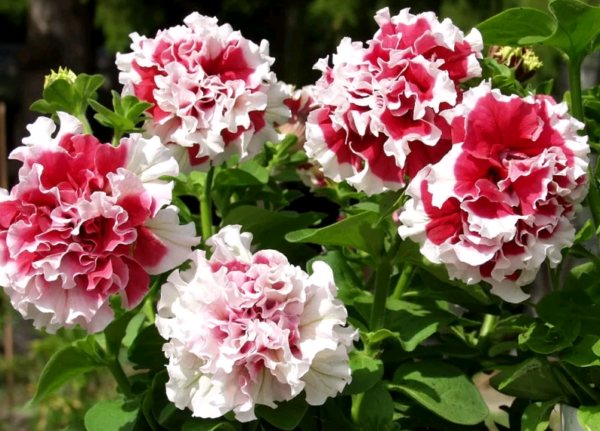

The stem is erect, height from 25 to 40 cm and flowers up to 13 cm in diameter.The corolla is varied (fringed, wavy). Flowers can be either simple or semi-double.
In double inflorescences, seeds are rare. Petunia is thermophilic, so landing sites must be protected by the wind.
The negative point is that due to the fact that the flowers of this species are the largest, they beat with rain and require additional work to remove damaged and wilted flowers. In order to avoid this disadvantage, it is more convenient to grow in portable containers and pots, which can be easily moved to a safe place when it rains.
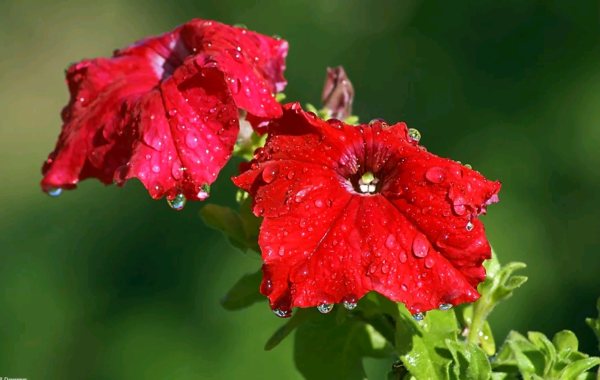

Large-flowered petunias are irreplaceable in decorating flower beds, loggias, terraces. Grown in containers and pots.
Hybrids of grandiflora and multiflora, which consider themselves the best signs of their ancestors, have proven themselves well. So hybrids inherited larger sizes from petunia grandiflora, although it is not uncommon for a plant to have both flowers. From petunia multiflora, hybrids inherited resistance to the whims of the weather, multi-flowering. These hybrids were assigned to the Floribunda category.
Features of petunia
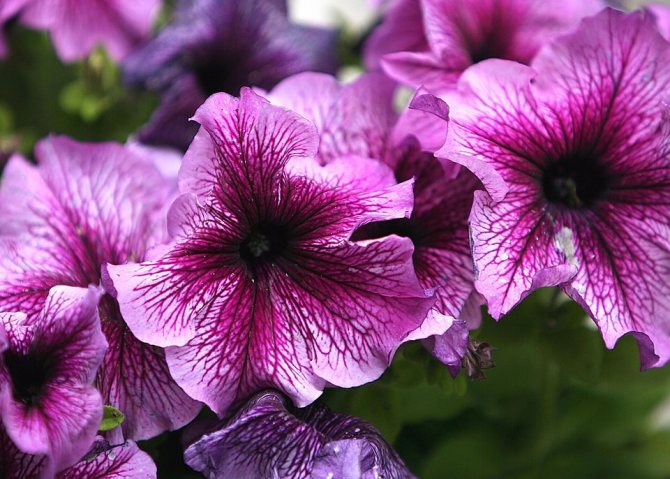

The shape of the petunia is bushy. In height, such a flower can reach 0.15-0.7 m, its densely branched shoots can be erect or creeping. Alternate solid oval leaf plates in length reach 5-12 centimeters, they have a dark green or green color. There is pubescence on the surface of foliage and shoots. Single funnel-shaped flowers are located on short peduncles, they can be irregular or regular, terminal or axillary, double or simple, and fringed are also found. Flowers can be purple, pink, blue, pale red, white and violet, with a border, a whitish star, a halo, or dark veins. The fruit is a bivalve box with seeds inside.
On balconies and garden plots, varieties of garden petunia (hybrid) are cultivated, which were bred using wild species of axillary petunia and purple petunia. Flowering begins in July and ends with the onset of frost. Perennial petunia is always grown as an annual plant.
Manifold
Varieties of petunia grandiflora:
- Petunia Grandiflora Prism Sunshine - has large flowers with a bright lemon-yellow color, height up to 25 cm.
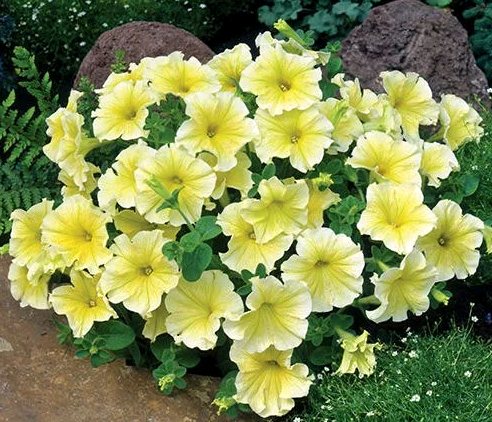

- Petunia Grandiflora Dreams. Resistant to changes in weather conditions. The bushes are lush, undersized. Color of flowers: pink and white with a yellow throat; light purple; red; salmon;
- Petunia Grandiflora Burgundy (Burgundy) - large bushes up to 35 cm, flowering begins from June to late autumn. The flowers are velvety, dark cherry in color;
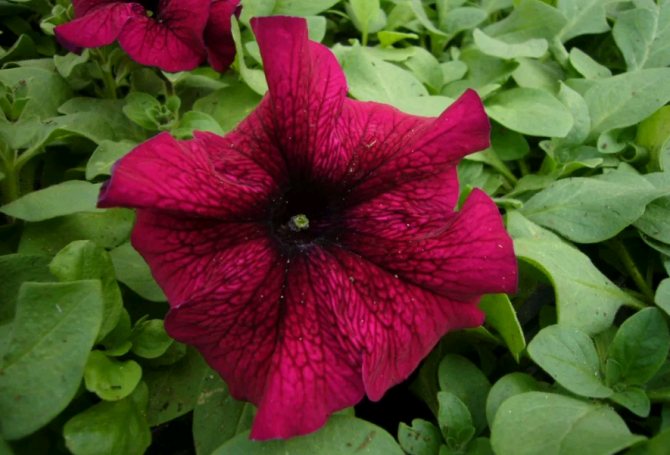

- Petunia Grandiflora Limbo (Limbo) - the plant is compact, branched with abundant flowering. The color palette is white, red, in shades of pink, blue and light lilac, cherry flowers. Petunia Limbo is an early flowering plant;
- Petunia Grandiflora Aladdin (Aladdin) height up to 40 cm. Flowers with lace edges. Drought-resistant. Inflorescence color: lavender, blue-violet, crimson, red with a white throat, etc.
Useful information about the plant
On a note!Many people wonder if petunia is poisonous or not? This plant belongs to the Solanaceae family, which means that the plants should not be eaten. But gardeners rightly believe that no one would ever think of eating flowers. But when the petunia flowers in the garden, near the house, are fragrant with their aroma and delight the eye with their splendor of colors, it is very pleasant. In June, July, August - petunia does not stop blooming until frost.
It turns out that petunia flowers occupy one of the first places in the world in terms of their popularity, and the production of seeds of this beautiful flower takes one third of the production of seeds of all flowers.This is not surprising, because petunia is a fabulously beautiful, extraordinary flower. A variety of varieties and types, sizes, palettes and patterns, as well as a delicate and pleasant aroma - all this will literally turn the head of any person.
Sowing seeds
It is not recommended to harvest petunia seeds yourself. Due to the fact that self-pollination could occur next year, the species you expect may not grow from them, the color, the shape of the flower may change. Based on practice, weak plants grow in from the collected seeds independently, less resistant to diseases, changes in environmental conditions.
The best time for sowing seeds is late February - early March, then the flowers will bloom in June.
Also, when choosing a soil, peat tablets have proven themselves. 10 minutes before sowing the seed, the tablets are immersed in water to store moisture. 1 seed is planted in a peat pot and covered with foil. Seedlings will appear in 7-10 days. Germination of seedlings at 20 C heat. For 2-3 days, it is necessary to remove the film, then cover it again and act this way until a real sheet appears. Petunias are very sensitive to lack or excess of moisture.
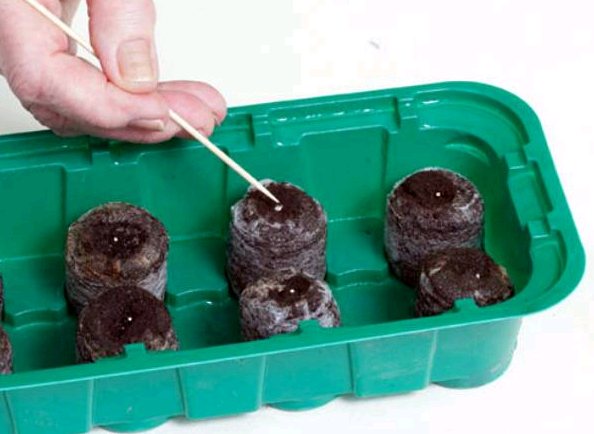

Preparing the soil for sowing seeds:
- Humus (1 hour);
- Sod land (1 hour);
- Peat (1 tsp);
- Coarse-grained river sand (0.5 hours).
When choosing seeds, it is necessary to focus on the F1 mark on the seed package. It is recommended to buy flowers from different manufacturers and different points of sale.
Petunia seeds are quite small. It is necessary to evenly distribute them when sowing. In the modern world, there is a fairly wide range of seeds that can look like granules or dragees, which makes them easier to sow. Also, additional processing of producers increases seed germination.
Untreated seeds should be mixed with fine sand and simply scattered over the soil surface. Do not cover with earth.
How to collect petunia seeds
If you decide to collect petunia seeds, wait for them to ripen on the bush. At the very beginning of flowering on the bushes of petunias of those varieties that you want to sow next year, plan for yourself a few lower buds, since in them the process of seed formation and ripening is faster. It takes about two months from the moment the buds are formed until the seeds are fully ripe.
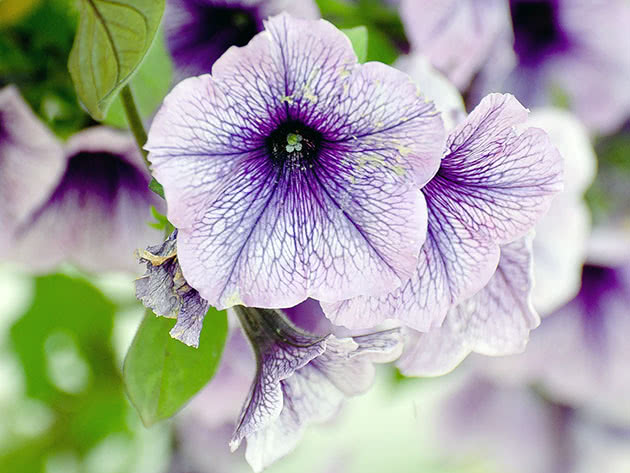

In the photo: Blooming variegated petunias
Petunia seeds are very small, their diameter is about 0.5 mm, there are about a hundred of them in a box. You can cut the seed boxes and store them at home, but it is better to shake the seeds out of the boxes, put them in bags and write on each of them the name of the variety and the year of seed collection. The seeds are dosed at room temperature for three to four months. With proper storage, petunia seeds do not lose their germination for up to four years.
- Irises in the garden
Care
Petunia Grandiflora prefers light, loose, nutritious soils.
To disinfect the soil, a solution of potassium permanganate is used. Seedlings need feeding once a week. A pick begins with the formation of 2-4 true leaves.
Since grandiflora is a rather capricious plant, it is necessary to avoid drafts, the place should be well lit and moderately moist.
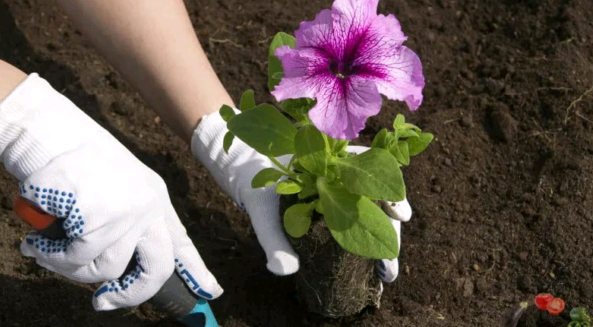

Before planting petunias, it is recommended to harden the seedlings for 5 days. The distance between the bushes should not be less than 20-25 cm. Mulching is used from drying out the earth, which will retain moisture and allow the plant to recover.
Caring for petunia in the garden
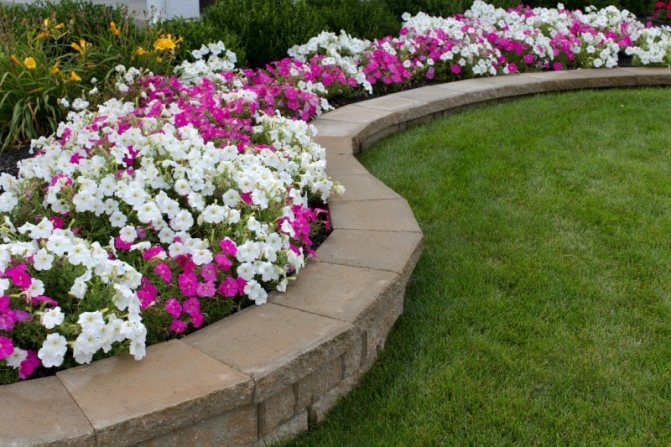

Growing petunia is not too difficult, but before you start planting it, you need to study all the rules and features of caring for such a plant. Petunia is drought tolerant, but it must be watered during hot summer months. It should be borne in mind that small-flowered varieties are less demanding for watering than large-flowered ones.During watering, water must be poured at the root, since otherwise very delicate flowers of the plant can be injured. After the petunia is watered, the next day it is necessary to loosen the surface of the site, while removing all the weeds.
If you want the flowering to be long-lasting and as effective as possible, systematically feed this plant. The first feeding of petunias is carried out 7 days after planting in open soil. Then feeding is carried out every one and a half weeks until August, using for this a complex fertilizer, which contains a large amount of potassium. Occasionally, petunia can be fed with organic fertilizers, for example, humic fertilizers or mullein infusion.
Reproduction of petunias by cuttings
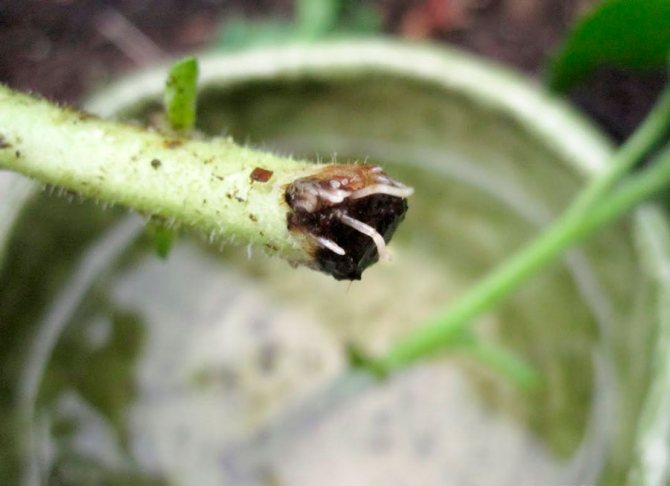

Propagation by cuttings is suitable only for terry and ampel petunias, and also for all varieties of mini-petunias (calibrachoa). Terry varieties can be propagated by cuttings in the last weeks of winter, the first - in spring, while mini-petunias and ampelous - all year round, but for this they need additional lighting with fluorescent lamps, as well as heat (from 21 to 24 degrees).
Cut off the apical cuttings, which should have 4 to 6 leaf blades. Tear off all the leaves except the top two. The remaining leaves should be shortened by ½ part. Cuttings must be planted for rooting in the same soil mixture that is used for seedlings. However, in this case, the surface of the substrate should be covered with a layer of perlite or sand 20–25 mm thick, which must be spilled with a fungicide solution. A distance of 15–20 mm must be kept between the cuttings, and the container is covered with glass on top. It is unnecessary to use means that stimulate growth (for example, Heteroauxin), because freshly cut cuttings root well, but you should not delay planting them. The substrate in the greenhouse should be slightly damp all the time; for this, the petunia needs to be moistened with a spray bottle twice a day. However, it should be borne in mind that excessive dampness contributes to the development of "black leg" or mold. The terry and ampelous petunia will fully take root after about 7 days, and the mini petunia will take root after 14 days.
After the length of the roots reaches 10-15 mm in length, the plant must be planted in individual pots, the diameter of which should be equal to 50 mm. In order for the plants to bush harder, they must be pinched over a 4 or 5 leaf plate. The tops of the stems remaining after the pinching can be used as cuttings. After half a month, if necessary, re-pinching of the stems is carried out. After 6 weeks, these plants are transplanted into pots, the diameter of which reaches 11-13 centimeters. It is necessary to care for growing cuttings in almost the same way as for seedlings. However, it should be borne in mind that ampelous petunias and mini-petunias require a lot of free space, in this regard, it is recommended to hang containers with them.
Diseases and pests
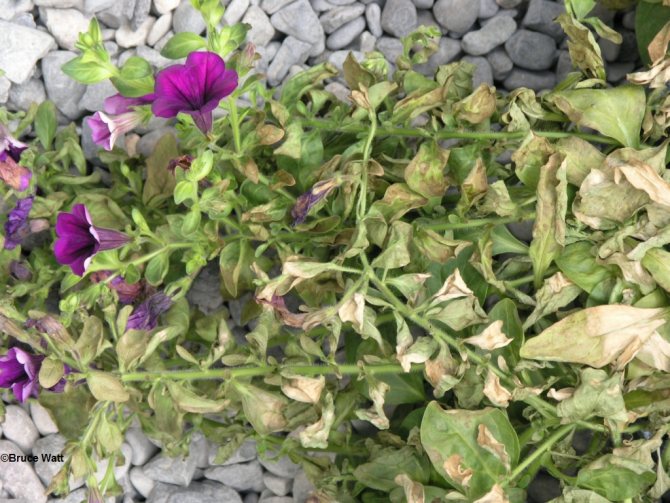

If, when growing petunias, you follow all the rules of agricultural technology of such a crop, then it will never get sick, and harmful insects will not settle on it. If you take care of the plant incorrectly, then it sometimes gets sick with late blight, chlorosis, black leg and gray rot. To combat these diseases, you need to use funds specially designed for this. However, it is better to prevent the development of diseases, for this you just need to properly care for the bushes. Also, this plant can infect viral diseases, which today are considered incurable.
Aphids, thrips, spider mites and slugs can settle on petunias. In order to get rid of them, you should also use drugs specially designed for this.
Seed collection
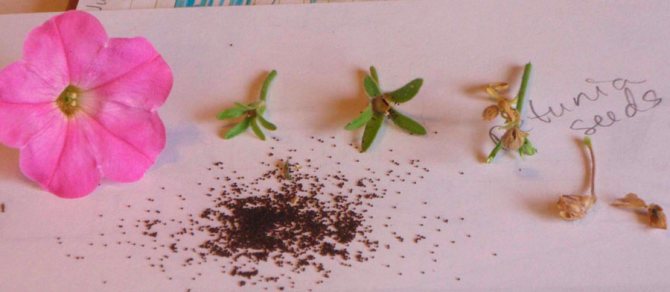

Seed collection should be carried out only after they are fully ripe on the bush. During the flowering period, the bushes of those varieties from which you will need to collect seeds should be noted.It should be noted that the lower buds are used to collect seeds, because in them the seeds form and ripen faster. After the bud is fully formed, you should notice 8 weeks, after this time, the seeds in them will fully ripen. The seeds of such a plant are small (about half a millimeter in diameter), there are about 100 of them in one box.
Shake out the ripe seeds from the pods and distribute them in bags, do not forget to sign the harvest year, variety and color of the flower. Alternatively, you can simply cut the boxes and store them at home. The seeds need to be ripened, for this they are stored for 3-4 months at room temperature. If the seeds are stored correctly, they remain viable for up to four years.
After flowering
If you want to save petunia, then it should be removed from the soil in October, then all shoots are removed from the bush. The bush is planted in a pot and removed to a cool room. Here the flower will rest, but it needs to be watered occasionally so that the earth is moderately moist. The pot with the plant must be transferred to a well-lit warm windowsill in February, while systematic watering must be resumed. After 2 or 3 pairs of leaf plates are formed in young stems, they must be cut off with a "heel", which are planted in pots filled with nutritious soil, its surface should be covered with a layer of sand. The container must be covered using glass or film, then it is transferred to a small shade. Provide the plants with regular watering, spraying and airing for 20 days while the shoots are rooting. Then the plant is transplanted into separate cups. They are planted in open soil at the same time as petunia seedlings.
Unnecessary faded petunia bushes in autumn should be dug up and burned, and the site should be dug up.
Pests
The most common pests. affecting petunia:
- Slugs;
- Spider mite;
- Whiteflies.
The plant can be protected by timely spraying with insecticidal preparations.
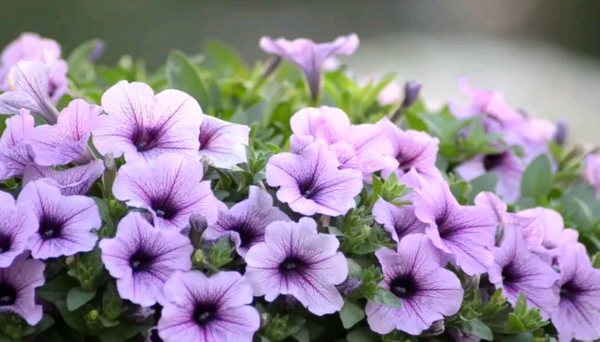

When caring for petunias, damaged and dried flowers and leaves should be promptly removed, and then it will delight you with its beauty for a long time.
Botanical description
Petunia has erect or creeping shoots, depending on the variety, with a height of 20 cm to 1 meter. Leaves are varied in shape and size, pubescent, like the stems. The flowers are large, with five petals. They have a recognizable funnel shape and can be either simple or terry. The culture has a strong, recognizable scent. The fruit is a bivalve capsule with small seeds.

